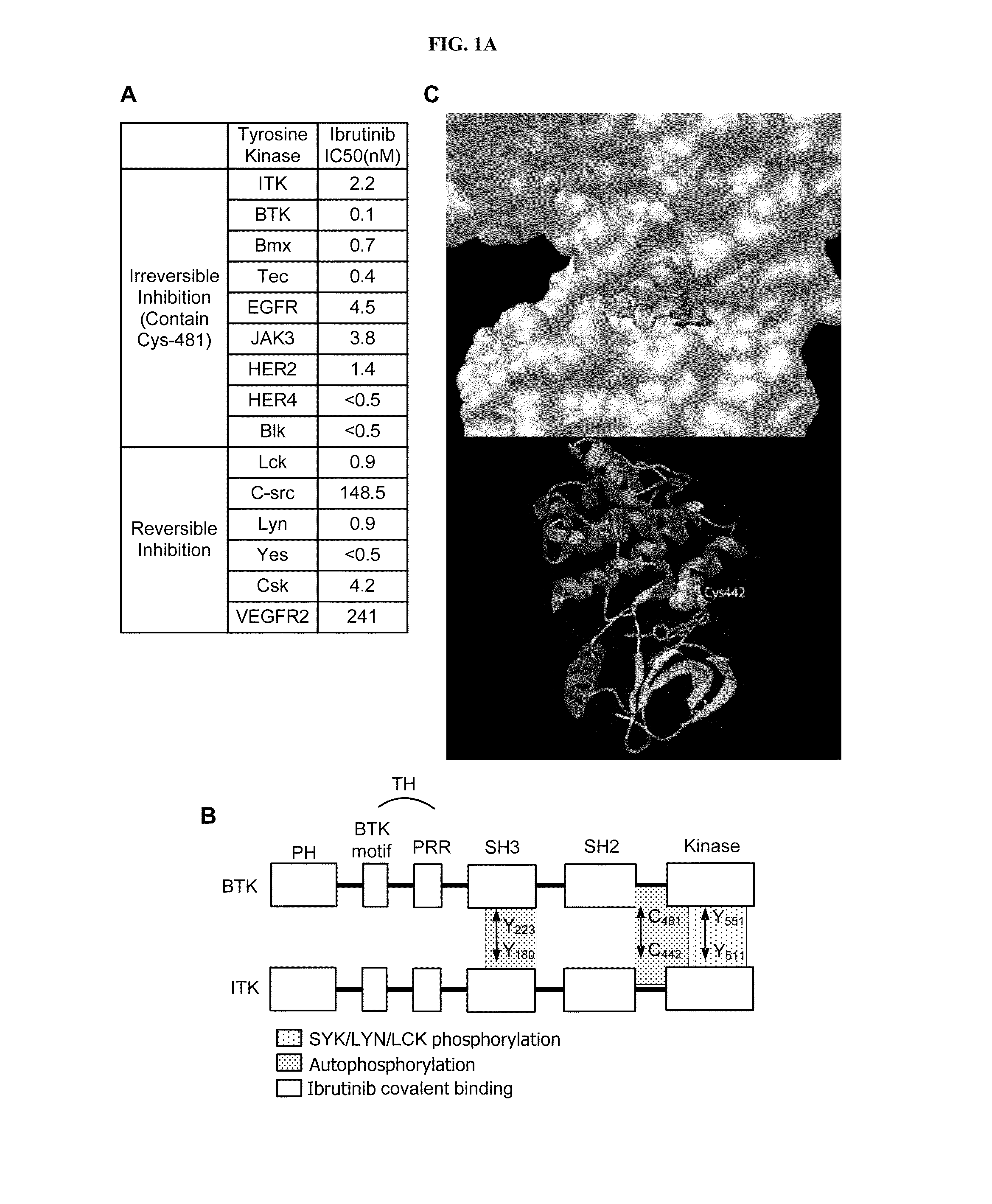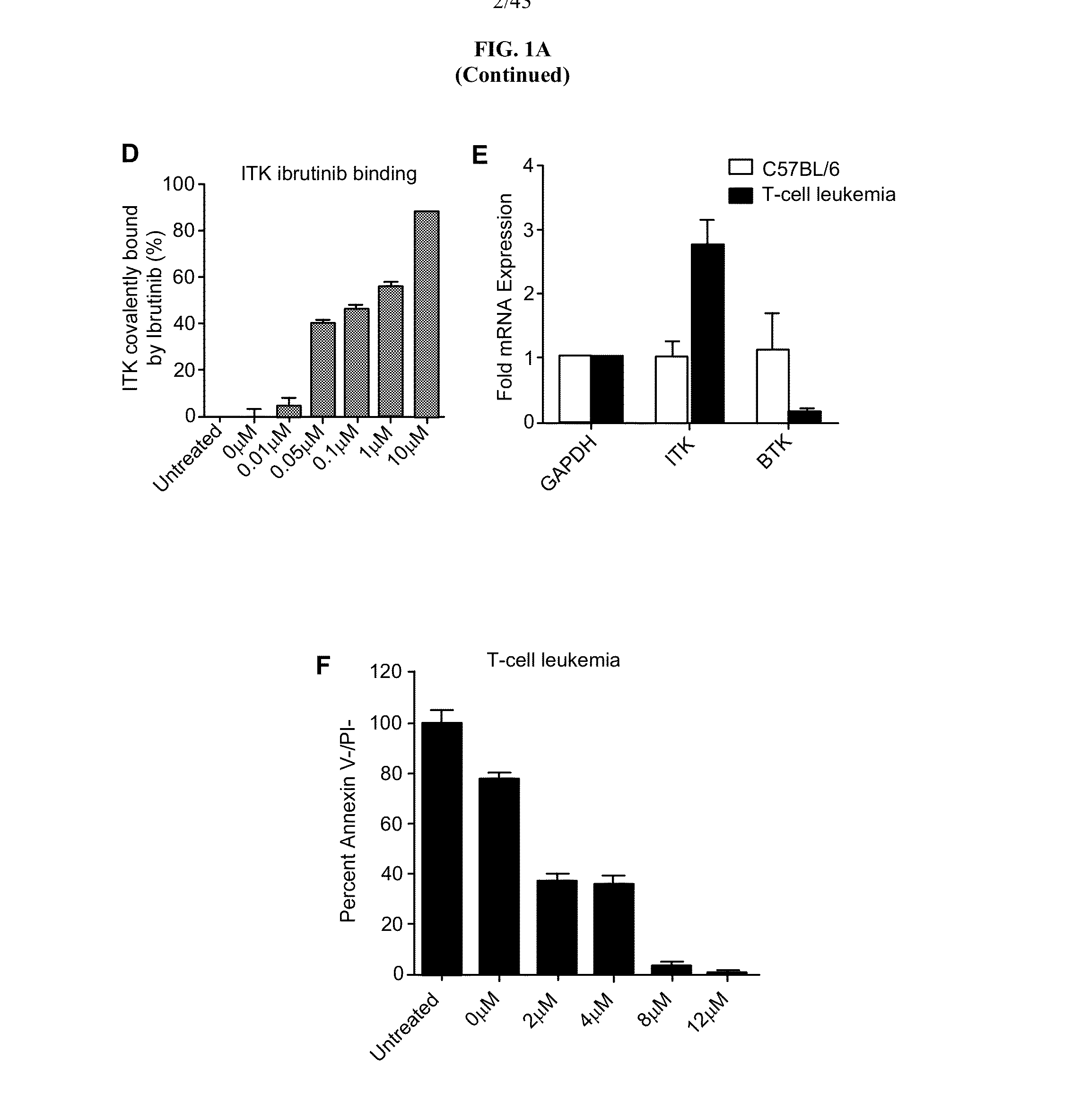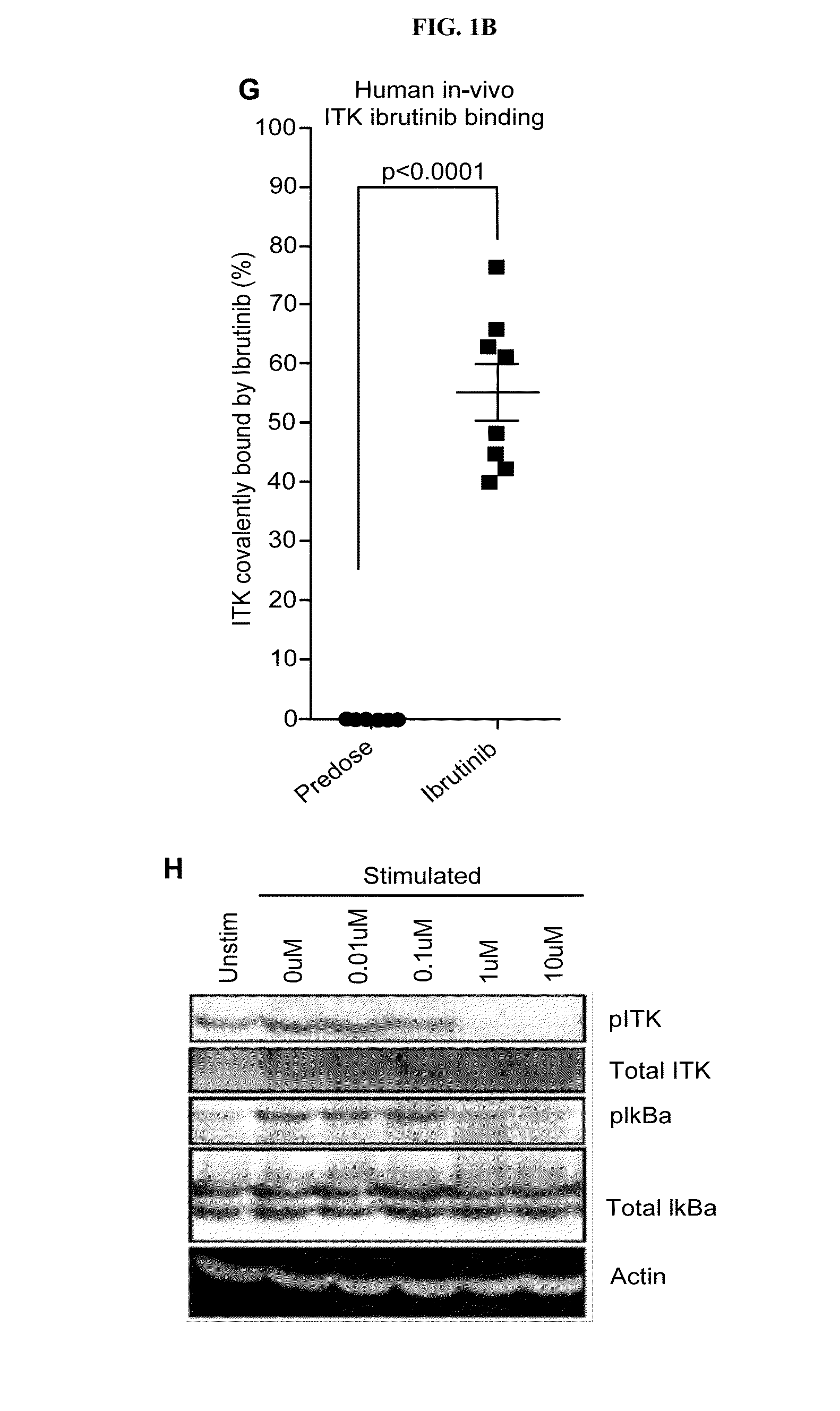Tec family kinase inhibitor adjuvant therapy
a kinase inhibitor and family technology, applied in the field of tec family kinase inhibitor adjuvant therapy, can solve the problems of high risk of cancer recurrence, high risk of subject's recurrence, etc., to reduce the risk of prevent, delay relapse or refractory disease, suppress the th2 response
- Summary
- Abstract
- Description
- Claims
- Application Information
AI Technical Summary
Benefits of technology
Problems solved by technology
Method used
Image
Examples
example 1
[0279]T-lymphocytes comprise an indispensable component of the adaptive immune response, yet certain autoimmune, infectious, parasitic, and neoplastic diseases subvert adaptive immunity by specifically misdirecting T-helper cell polarity. A common mechanism of immune subversion is the aberrant recruitment of a Th2 dominant response that directly promotes B-cell antibody production and interferes with direct effector cell cytotoxicity. In contrast, a Th1 dominant response evokes cytotoxic effects with the production of IFNγ and IL2, which contribute to effector cell-based immune surveillance. Clearance of certain intracellular bacterial pathogens such as Listeria and parasites such as Leishmania, as well as tumor immune surveillance, hinge upon the capacity to elicit robust Th1 and CD8 T-cell responses.
[0280]Interleukin-2 Inducible Kinase (ITK) is a T-cell dominant member of the covalent Tec-kinase family that drives proximal T-cell receptor (TCR) signaling. Upon TCR ligation in Th1 ...
example 2
Ibrutinib PCYC-04753 Phase I Clinical Trial Demonstrates Th1 / Th2 Skewing Due to an Elevated Level of IFNγ
[0332]A serial serum cytokine and chemokine levels were investigated in CLL patients receiving ibrutinib as part of a phase I study. The data demonstrated a decrease in serum Th2-type cytokines including IL10, IL4, and IL13 from pre-treatment to day 28 of ibrutinib therapy (FIG. 21a). Th2-type chemokines including MIP1α, MIP1β and MDC also exhibited a decrease from pre-treatment to day 28. These Th2-type cytokine / chemokine levels were in sharp contrast to a simultaneous increase in the Th1-type cytokine IFNγ. Soluble CD40L (sCD40L), a Th1-type cytokine, showed a decrease in patients receiving ibrutinib as part of the phase I study. Th1 / Th2 ratio was also investigated in CLL patients receiving ibrutinib as part of the phase I study (FIG. 21b). The data demonstrated a decrease in serum cytokines IL4, IL13 and sCD40L and an increase in IFNγ.
example 3
Ibrutinib Effect on Cytokine / Chemokine Response in High Risk RR CLL Patients
[0333]A serial serum cytokine and chemokine levels were investigated in high risk RR CLL patients receiving ibrutinib as part of a cohort 4 study. The data demonstrated a decrease in the level of serum Th2-type cytokines including IL10, IL8, MCP-1, MDC, MIP1α, and MIP1β from pre-treatment to day 28 of ibrutinib therapy (FIG. 22). The level of the Th2-type cytokine IL6 remained constant during the course of the ibrutinib therapy. The level of the Th1-type cytokine TNF-α also decreased during the course of the ibrutinib therapy.
PUM
| Property | Measurement | Unit |
|---|---|---|
| covalent | aaaaa | aaaaa |
Abstract
Description
Claims
Application Information
 Login to View More
Login to View More - R&D
- Intellectual Property
- Life Sciences
- Materials
- Tech Scout
- Unparalleled Data Quality
- Higher Quality Content
- 60% Fewer Hallucinations
Browse by: Latest US Patents, China's latest patents, Technical Efficacy Thesaurus, Application Domain, Technology Topic, Popular Technical Reports.
© 2025 PatSnap. All rights reserved.Legal|Privacy policy|Modern Slavery Act Transparency Statement|Sitemap|About US| Contact US: help@patsnap.com



